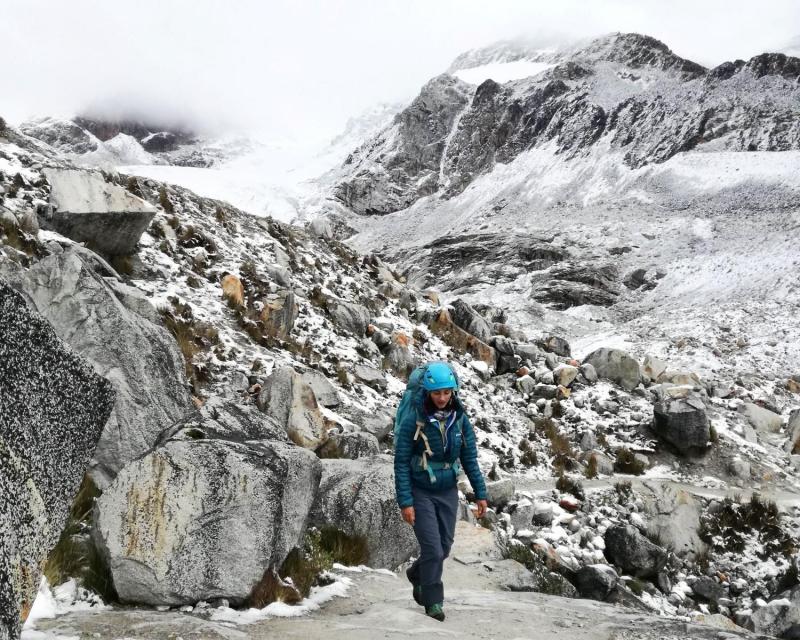Czick on the road / / Training Your Body for the World’s Toughest Trails - Before You Hit the Peaks
Rushing the Summit is a Good Way to Never Reach It
There’s a certain allure to high-altitude challenges—the isolation, the rugged beauty, the test of endurance. But one of the biggest mistakes trekkers make is focusing solely on the summit, while ignoring the long, difficult lead-up their body actually needs. Conditioning for extreme terrain doesn’t start with the mountain; it starts with mastering the ordinary.
If you’re dreaming about remote trails, you need to first respect the mechanics of building up to them. There’s no shortcut to adaptation—only a path that starts well below the tree line.
Start with Terrain That Teaches, Not Tests
The best entry point isn’t dramatic—it’s deliberate. Begin with local day hikes and moderate overnight treks that include variable elevation gain, rocky paths, and fluctuating weather conditions. These aren’t consolation prizes. They’re where your legs learn pacing, your lungs adjust to strain, and your joints start reading uneven ground like a language.
Try starting with grade 2 or 3 trails in regions where weather can shift. Wet shoes, unplanned detours, or altitude swings of a few hundred meters offer valuable lessons in energy management. Trails in the Appalachians, Pyrenees, or the Western Ghats can introduce your body to rhythm and recovery without overloading it.
Strength Isn’t Optional—It’s a Core Skill
Serious trekking is not long-distance walking. It’s explosive movement across unstable terrain, where your core, hips, and glutes bear most of the load. Yet many training regimens miss this, focusing instead on cardio alone.
Prioritize compound strength work: step-ups with weight, Bulgarian split squats, loaded carries, and mobility drills. These movements mimic real-life trail mechanics far better than isolated gym machines. Use a weighted vest occasionally on stair intervals or moderate hills to simulate pack-carrying—an overlooked stressor that breaks down many first-time trekkers.
Cardio That Doesn’t Ignore the Climb
Your lungs are as much your gear as your boots. But logging miles on flat terrain doesn’t translate to altitude or incline. Instead, get your aerobic base through incline work: treadmill hiking at 10-15% grade, hill repeats, and sustained zone 2 heart-rate hikes. Then, push anaerobic boundaries with short bursts: stair sprints, sled pushes, and tempo runs.
Adaptability—not just endurance—matters in the high places.
Exposure Training is a Discipline
Too many people wait until the expedition to expose themselves to cold, elevation, or poor footing. This makes your body reactive when it should be responsive. Controlled exposure—cold showers, fasting on low-exertion hikes, training in the rain—builds your tolerance gradually, helping the body prioritize performance over comfort.
If altitude is in your future, don’t just rely on acclimatization during the trek. Pre-acclimatization tools, like hypoxic training masks or sleeping in high-altitude simulation tents (if accessible), can offer a small edge. But even without equipment, intermittent hikes above 2,000 meters, spaced over months, are invaluable.
Progression is Strategy, Not Guesswork
It takes planning to move from a three-hour forest hike to something like the K2 Base Camp trek. Every six weeks, increase complexity: more elevation, longer days, heavier packs. Don’t just add distance—alter environments. Heat, rain, rock, mud—each adds a new variable your body must solve. And solve it before the stakes get higher.
Cross-train with disciplines that challenge coordination and endurance: trail running, bouldering, or even martial arts can dramatically sharpen your spatial awareness and movement economy.
Rest is Part of the Climb
Here’s the part even seasoned trekkers neglect: regeneration. Recovery is where progress settles into the body. Active rest, yoga, and focused mobility work aren’t side activities—they’re reinforcements. If you’re training hard, your sleep, hydration, and nutrition have to scale with you.
Don’t treat overtraining as proof of commitment. Treat it as what it is: a failed strategy.
Earn the Mountain, Don’t Gamble With It
There’s a kind of discipline in training for serious altitude that goes beyond motivation. It’s in the quiet commitment to build, layer by layer, a body that doesn’t just survive the trail but meets it with resilience. You won’t find this on a treadmill or a YouTube vlog. You’ll find it in weeks of quiet effort, in terrain that humbles you just enough to learn without consequence.
Tough trails reward those who arrive prepared. The rest are just tourists, hoping luck does the job of training.
Comments
Training Your Body for the World’s Toughest Trails - Before You Hit the Peaks




